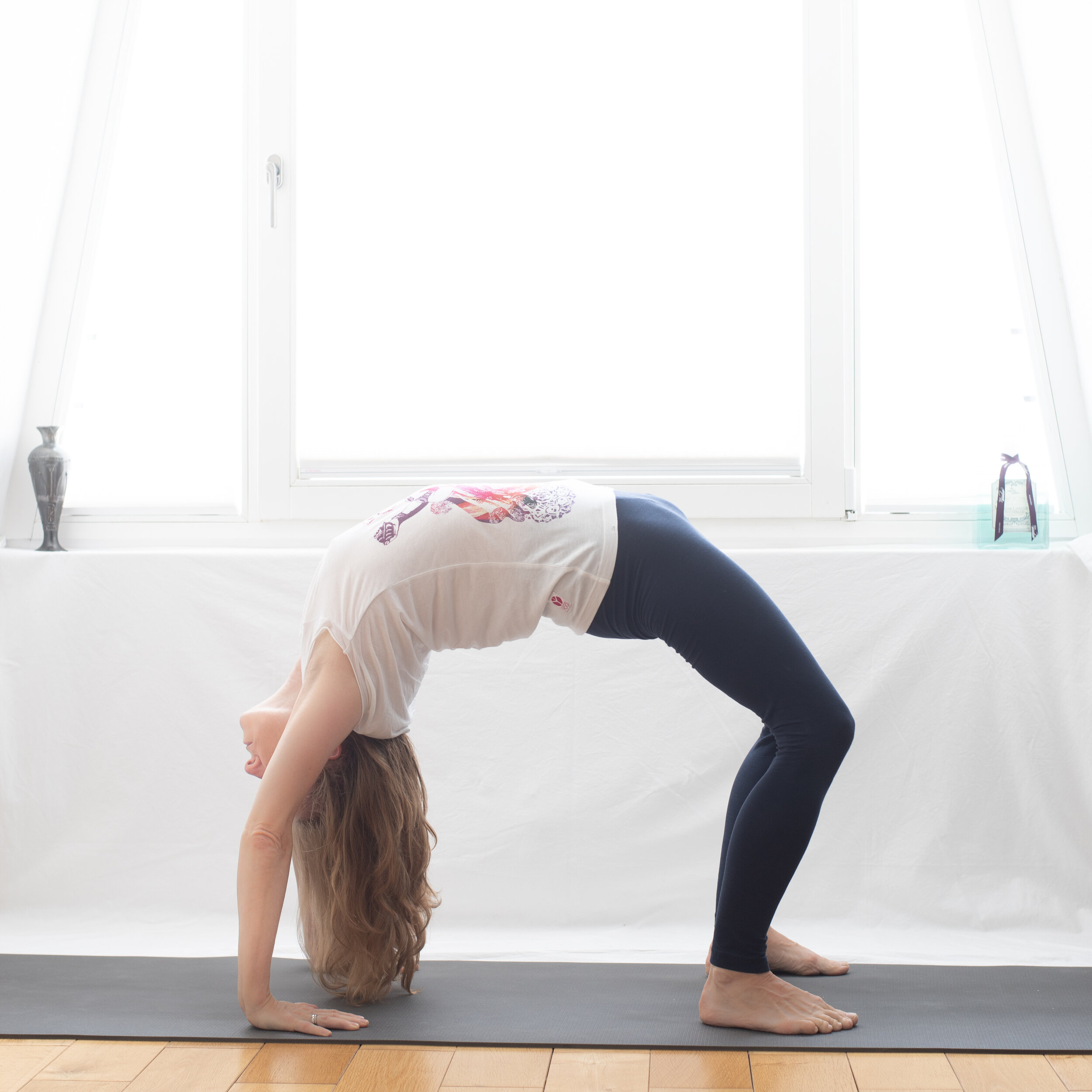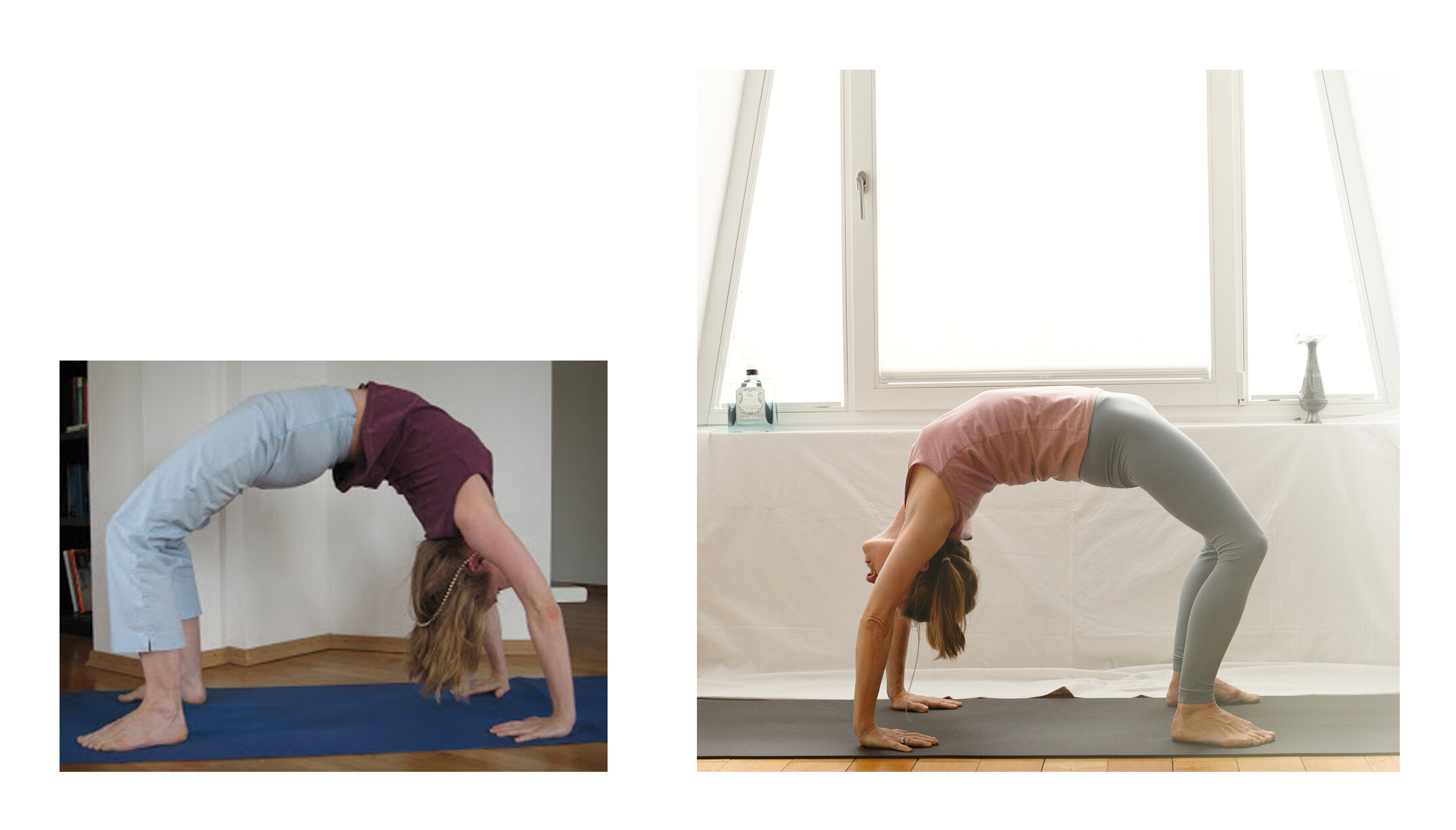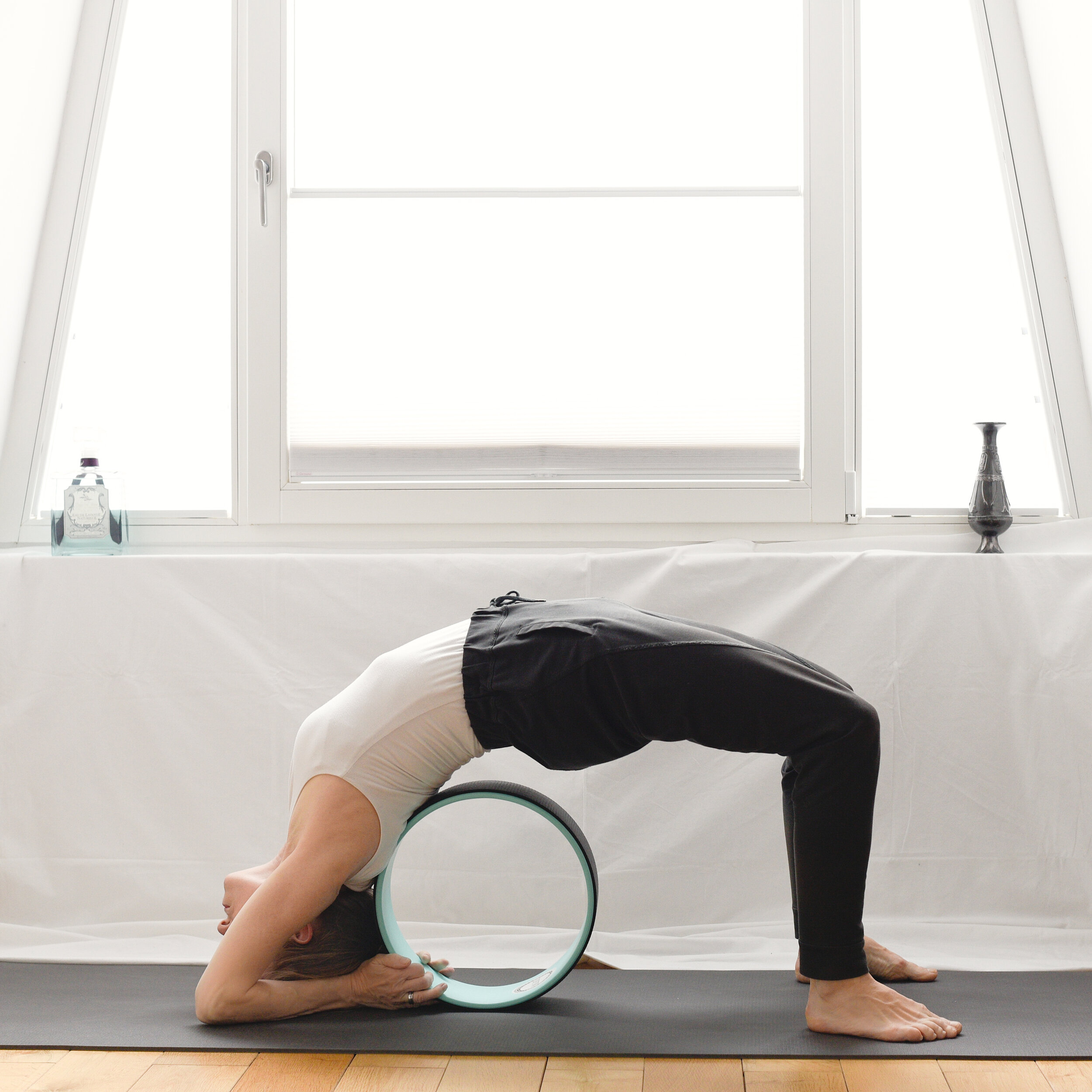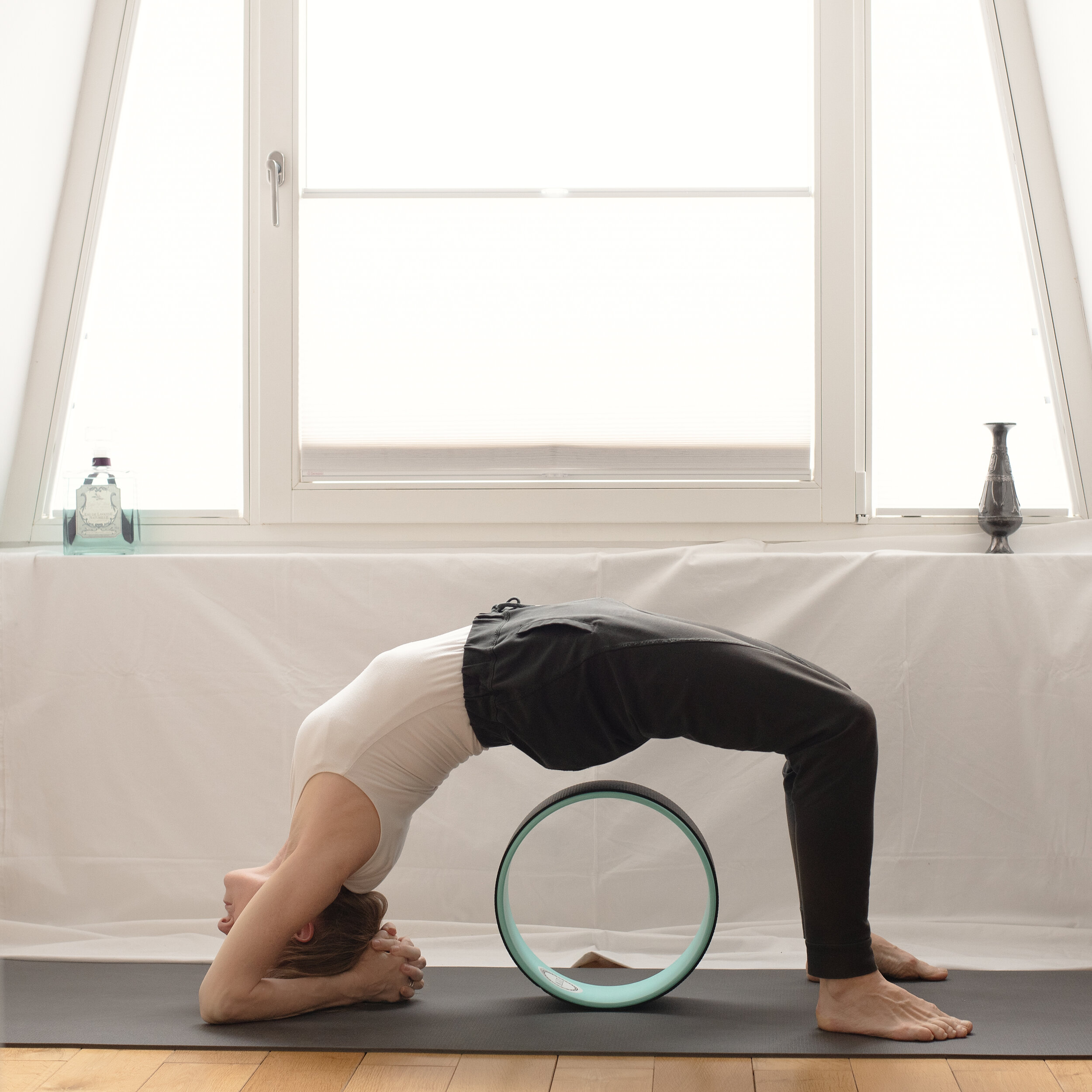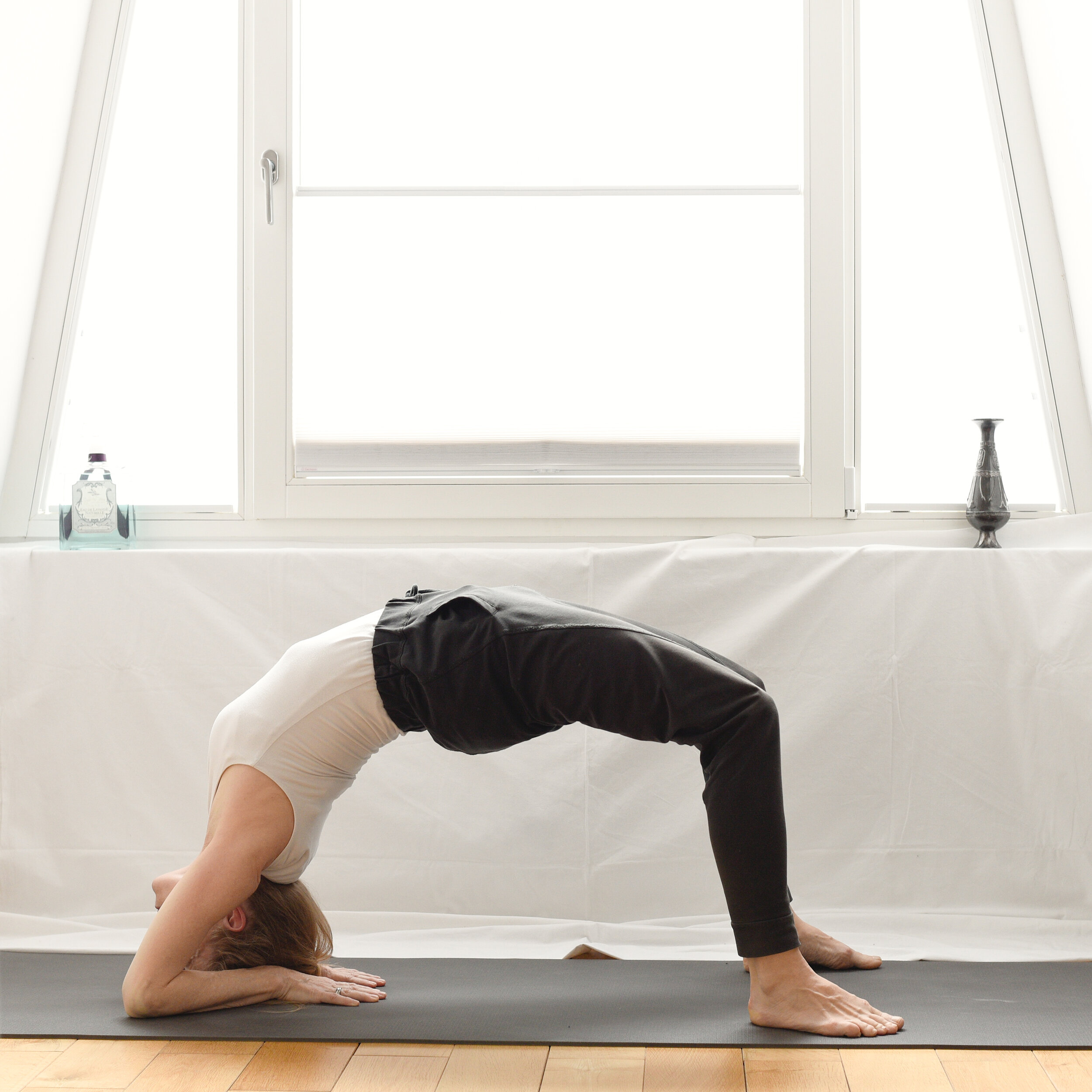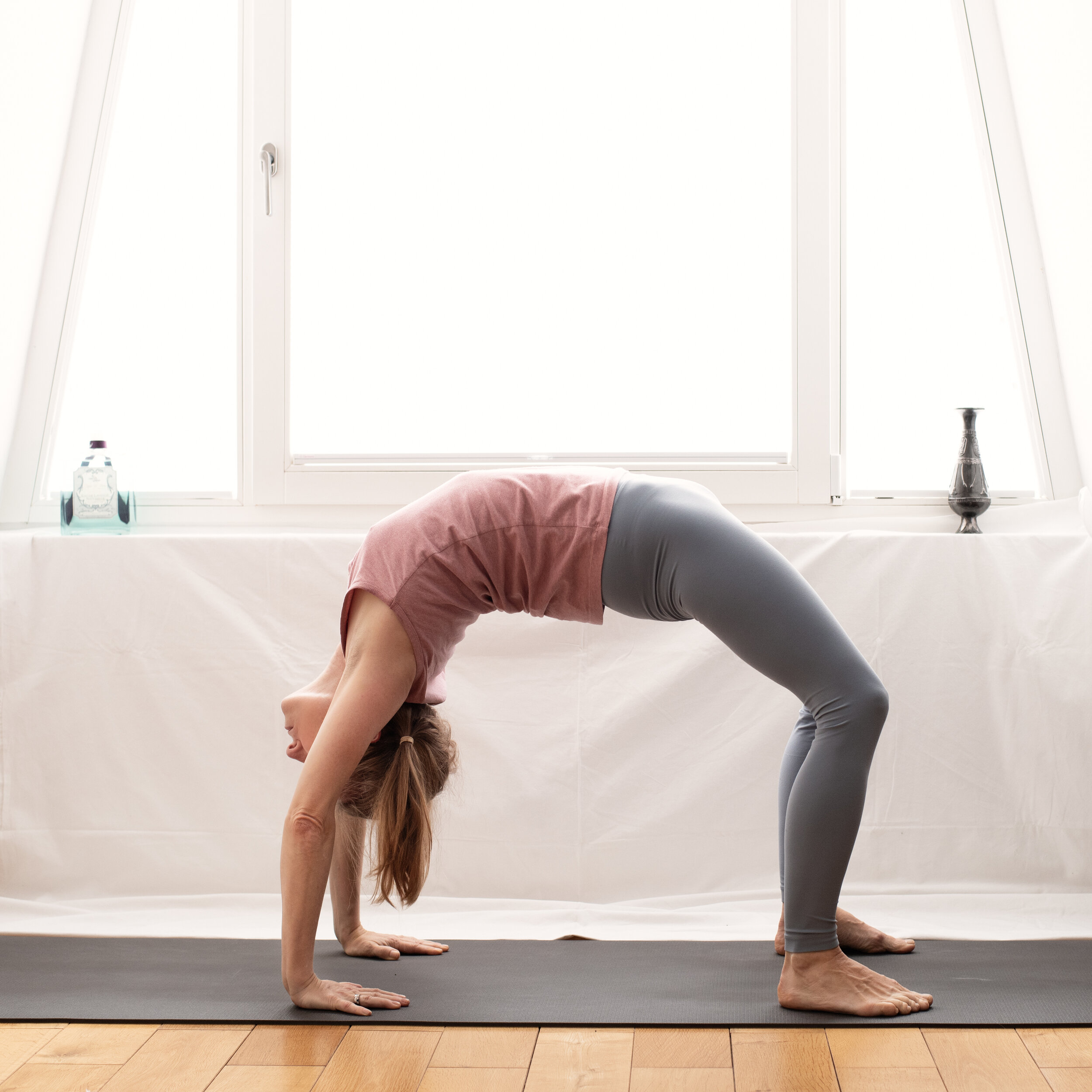The bow looks good, it’s rather even. The hands are too far away from the feet. This makes it impossible to come up from this asana. That’s why urdhva dhanurasana is the focus in August. Yet, the arms are nicely stretched. The pose looks balanced and easy. Everything must look easy these days, even though it isn’t.
Oh, did I forget goal #1? Of Course not. I want to ramp up the frequency of my practice. Only when I practice yoga asana can improve. The time spent on the mat needs contents and focus.
Most of the time I practice second series till after the twists. I add so many asanas that time passes by too quickly. There is no time to do the entire second series within 90 minutes. Might be that I’ll limit all the additional asanas one day again. Right now it feels good. Bending backwards is no more such a horror idea. I think all the easier back bending asanas that I practiced before the more challenging ones made the approach to back bending more joyful.
I practice urdhva dhanurasana after my attempts to do kapotasana.
My most important exercise right now is that I hold urdhva dhanurasana 1 min. I use timer and I count my breaths. I need much more breaths than in a relaxing position. To focus on the breath distracts me from the discomfort that sets in after a while. One minute is not long, but it feels long.
Those who practice Ashtanga yoga know the urdhva dhanurasana sequence. After 5 breaths one lowers the head to the floor, the hands walk closer to the feet and then one lifts up the body again. This is done twice, so that urdhva dhanurasana is done three times in total. At the end one shall be able to stand up from this position. Not possible yet, that’s why I want to focus on that pose.
This routine frustrates many yogis. It’s integrated rather late in the primary series. It pops out as something that doesn’t belong at that place. After all the forward bending asana of primary such a deep back bending pose is neither logic, nor does it feel good. Most yogis struggle with this routine. I guess that many give up.
Life is not logical either. I feel ready to work again more intensively on that asana. I’m curious what is possible within a month.



